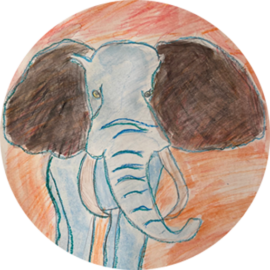Love, Math & Witchcraft: How Roasting Psychoanalysis Came Back to Bite Richard Feynman
California Institute of Technology, 1961: Richard Feynman is giving a series of introductory physics lectures for undergraduates. This is long before he’s awarded the Nobel Prize, but he’s already a living legend. The sessions are so popular that the exact venue must be kept a secret, lest students overcrowd the auditorium and create chaos.
The early lectures have been preserved for posterity in the book Six Easy Pieces : Essentials of Physics Explained by Its Most Brilliant Teacher.
That’s how we know that Feynman spends considerable effort in establishing the basics first, trying his best to demarcate the line between what should and shouldn’t count as science.
Perhaps surprisingly, mathematics doesn’t make the cut, since its validity isn’t defined by experiment.
Then again, says Feynman:
If a thing is not a science, it is not necessarily bad. For example, love is not a science. So if something is said not to be a science, it does not mean that there is something wrong with it; it just means that it is not a science.
He goes on to triangulate physics by comparing it to adjacent fields like geology, astronomy, and chemistry. Then, via biology, he’s led to comment on psychology, and in particular on psychoanalysis. All of a sudden it’s not so evident that just because something isn’t a science, there’s nothing wrong with it:
Incidentally, psychoanalysis is not a science; it is at best a medical process, and perhaps even more like witch-doctoring. It has a theory as to what causes disease—lots of different “spirits,” etc. The witch doctor has a theory that a disease like malaria is caused by a spirit which comes into the air; it is not cured by shaking a snake over it, but quinine does help malaria. So, if you are sick, I would advise that you go to the witch doctor because he is the man in the tribe who knows the most about the disease; on the other hand, his knowledge is not science. Psychoanalysis has not been checked carefully by experiment, and there is no way to find a list of the number of cases in which it works, the number of cases in which it does not work, etc.
I guess that’s about as drastic as scientific roasting gets. And as is often the case with roasting, it’s funny and entertaining.
It’s also thought-provoking because it seems Feynman’s harsh verdict is coming back to bite him towards the end of the semester, when he struggles to explain quantum physics to his students, saying about the double slit experiment (which reveals, but fails to explain, the wave-particle duality of quantum systems) that:
One might still like to ask: “How does it work? What is the machinery behind the law?” No one has found any machinery behind the law. No one can “explain” any more than we have just “explained”. No one will give you any deeper representation of the situation. We have no ideas about a more basic mechanism from which these results can be deduced.
He goes on to lament, again on the topic of the uncertainty embedded in quantum mechanics:
Nature as we understand it today, behaves in such a way that it is fundamentally impossible to make a precise prediction of exactly what will happen in a given experiment. This is a horrible thing; in fact, philosophers have said before that one of the fundamental requisites of science is that whenever you set up the same conditions, the same thing must happen. This is simply not true; it is not a fundamental condition of science. The fact is that the same thing does not happen, that we can find only an average, statistically, as to what happens.
Feynman is revolting agains the same thing that made Einstein a lifelong sceptic of the very field he helped create, famously refusing to believe that “God plays dice”.
And yet the further we zoom in on Mother Nature, the clearer it gets that on its most fundamental level, science looks more like ‘witch-doctoring’ than anything else.
Still that doesn’t mean it can’t yield answers to hugely important questions about Life, Universe and Everything. Which in my personal experience also happens to be true of psychoanalysis.
